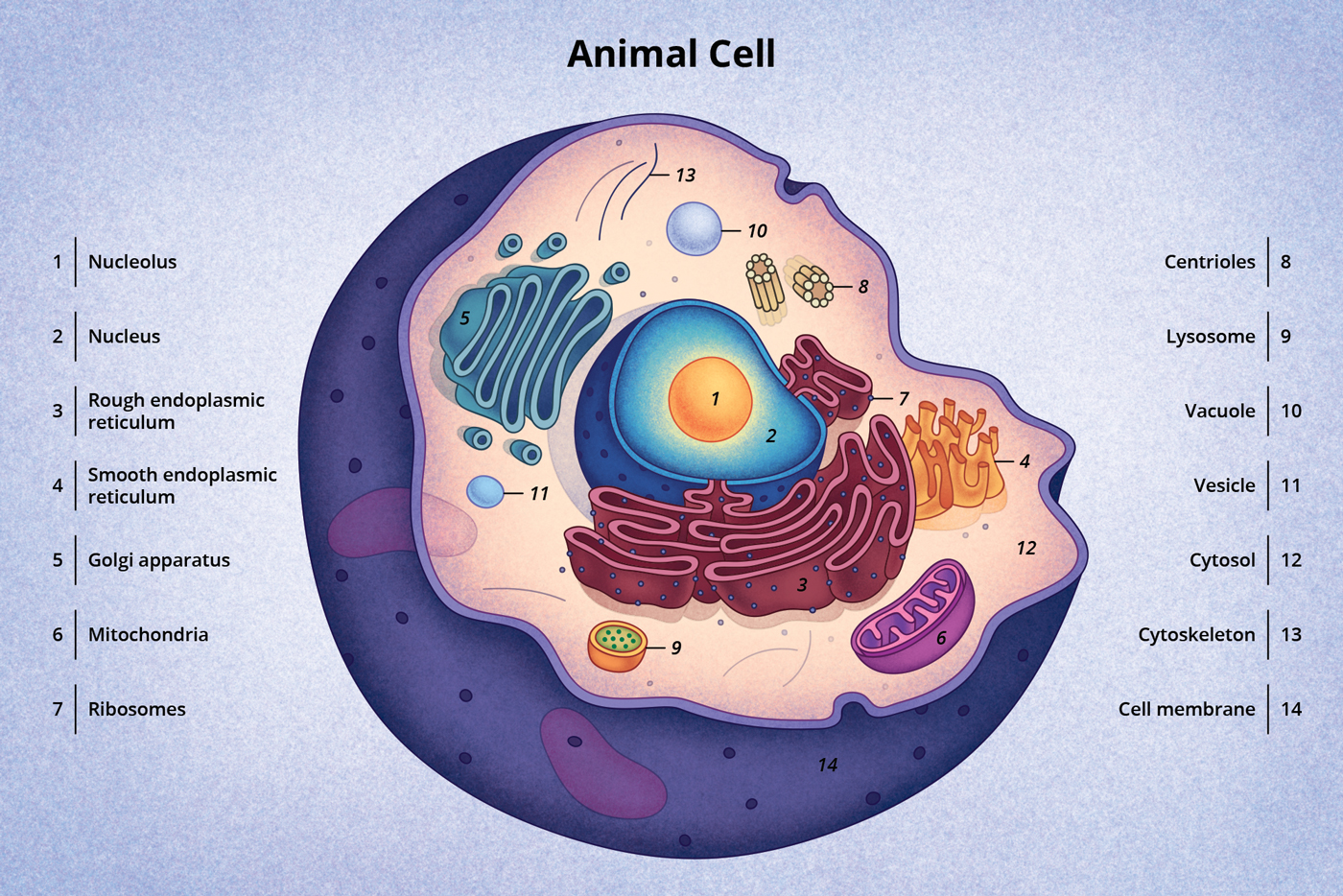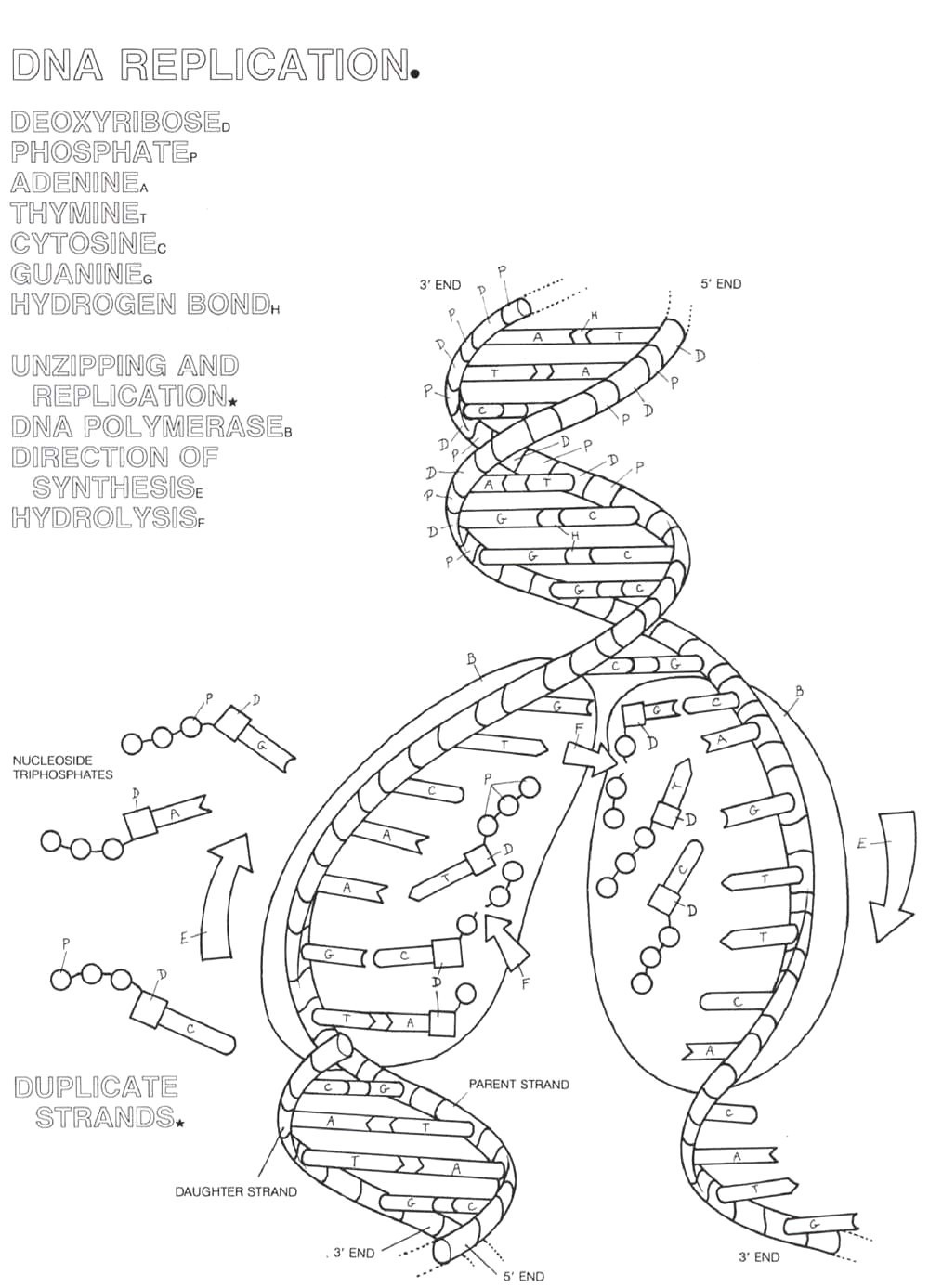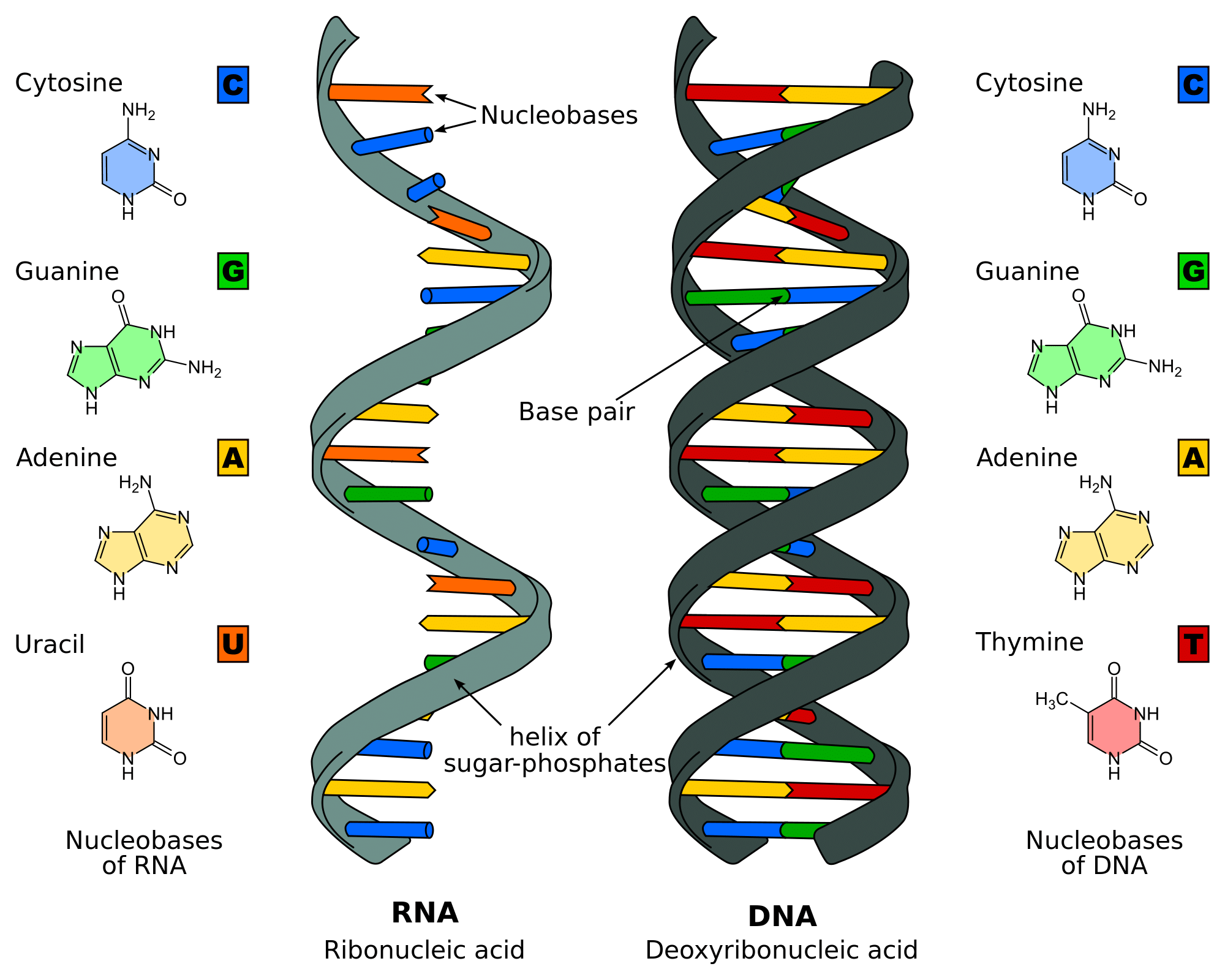41 dna structure diagram labeled
Gram Stain Technique (Theory) : Microbiology Virtual Lab I ... 2) Addition of Gram's Iodine. Iodine (I - or I3 -) acts as a mordant and as a trapping agent. A mordant is a substance that increases the affinity of the cell wall for a stain by binding to the primary stain, thus forming an insoluble complex which gets trapped in the cell wall. DNA topology dictates emergent bulk elasticity and hindered ... We show DNA-dextran composites exhibit unexpected nonmonotonic dependences of bulk viscoelasticity and molecular-level transport properties on the fraction of DNA comprising the composites, with characteristics that are strongly dependent on the DNA topology.
Photosynthesis - Wikipedia Photosynthesis is a process used by plants and other organisms to convert light energy into chemical energy that, through cellular respiration, can later be released to fuel the organism's activities.Some of this chemical energy is stored in carbohydrate molecules, such as sugars and starches, which are synthesized from carbon dioxide and water - hence the name photosynthesis, from the Greek ...

Dna structure diagram labeled
Quantitative Determination of Beta-Lactamase mRNA in the RNA ... Upon the hybridization of a DNA sample of BL TEM-1 labeled with biotin with specific oligonucleotide probes, the color intensity depended on the type of probe because the probes had different structures and lengths and, accordingly, were characterized by different stability of DNA duplexes . For all probes, a directly proportional dependence of ... Mitosis in Onion Root Tips - Amrita Vishwa Vidyapeetham In a karyotype, the chromosomes are arranged and numbered, based on size from largest to smallest, centromere position and banding pattern (due to staining) of chromosomes. This technique helps scientists identify any chromosomal abnormalities and alterations that may result in genetic problems and disorders. Deoxyribonucleic Acid (DNA) - Genome.gov DNA is made of two linked strands that wind around each other to resemble a twisted ladder — a shape known as a double helix. Each strand has a backbone made of alternating sugar (deoxyribose) and phosphate groups. Attached to each sugar is one of four bases: adenine (A), cytosine (C), guanine (G) or thymine (T).
Dna structure diagram labeled. Amino acid - Wikipedia They can be classified according to the locations of the core structural functional groups, as alpha- (α-), beta- (β-), gamma- (γ-) or delta- (δ-) amino acids; other categories relate to polarity, ionization, and side chain group type ( aliphatic, acyclic, aromatic, containing hydroxyl or sulfur, etc.). Layers of OSI Model - GeeksforGeeks 1. Physical Layer (Layer 1) : The lowest layer of the OSI reference model is the physical layer. It is responsible for the actual physical connection between the devices. The physical layer contains information in the form of bits. It is responsible for transmitting individual bits from one node to the next. A fungal dioxygenase CcTet serves as a eukaryotic 6mA demethylase on ... The electrostatic surface of CcTet and three flexible loop regions are shown and labeled. b - d, Three key loops (loop1 ( b ), loop3 ( c) and loop2 ( d )) and residues of CcTet involved in the... >Understanding a Material Safety Data Sheet (MSDS) A Material Safety Data Sheet (MSDS) provides basic information on a material or chemical product. A MSDS describes the properties and potential hazards of the material, how to use it safely, and what to do in an emergency. The purpose of this document is to assist Canadian employees in understanding and interpreting this type of information.
RNA and Proteins - BrainMass 1. Describe, in general terms, the steps involved in the automated synthesis of the DNA sequence GCT. 2. Draw and label the four DNA nucleosides. 3. Draw and label a G-C base pair. Indicate all hydrogen bonds with a dashed line. 4. Draw and label an A-T base pair. Indicate all hydrogen bonds with a dashed line. 5. Of Flowering plant - Wikipedia Flowering plants are plants that bear flowers and fruits, and form the clade Angiospermae (/ ˌ æ n dʒ i ə ˈ s p ɜːr m iː /), commonly called angiosperms.The term "angiosperm" is derived from the Greek words angeion ('container, vessel') and sperma ('seed'), and refers to those plants that produce their seeds enclosed within a fruit.They are by far the most diverse group of land plants ... Double Helix - Genome.gov A DNA molecule is made up of two linked strands that wind around each other to resemble a twisted ladder in a helix-like shape. Each strand has a backbone made of alternating sugar (deoxyribose) and phosphate groups. Attached to each sugar is one of four bases: adenine (A), cytosine (C), guanine (G) or thymine (T). Diffraction of DNA and the DNA of my Physics Class How Rosalind Franklin Discovered the Helical Structure of DNA: Experiments in Diffraction Revealing the Backbone Structure of B-DNA from Laser Optical Simulations of Its X-ray Diffraction Diagram X-ray diffraction and DNA optical transform from the ICE (Institute for Chemical Education) Online store at wisc.edu Optical transform demo kit
VectorBuilder | Revolutionizing Gene Delivery. The adeno-associated virus (AAV) vector system is a popular and versatile tool for in vitro and in vivo gene delivery. AAV is effective in transducing many mammalian cell types, and, unlike adenovirus, has very low immunogenicity, being almost entirely nonpathogenic in vivo. This makes AAV the ideal viral vector system for many animal studies. Animal And Plant Cell Quiz - ProProfs A. A thin, flexible barrier around the cell that regulates transport. B. A rigid cover that provides support for the cell. C. The place where light energy, water, and carbon dioxide are used. D. Converts solar energy to chemical energy. 3. What is the primary function of the Cell Wall? A. To protect and provide support for the cell. B. Mitosis in Onion Root Tips - Amrita Vishwa Vidyapeetham After the washing step add 2-3 drops of Feulgen stain into the tube with root tips and incubate the roots for 12-15 minutes. (During the incubation, the very tip of the root will begin to turn red as the DNA stains the numerous small actively dividing cells at the time). After the incubation remove the stain using a Pasture pipette. Nucleotide - Genome.gov A nucleotide is the basic building block of nucleic acids (RNA and DNA). A nucleotide consists of a sugar molecule (either ribose in RNA or deoxyribose in DNA) attached to a phosphate group and a nitrogen-containing base. The bases used in DNA are adenine (A), cytosine (C), guanine (G) and thymine (T).
Carcinogenesis - Wikipedia Carcinogenesis, also called oncogenesis or tumorigenesis, is the formation of a cancer, whereby normal cells are transformed into cancer cells.The process is characterized by changes at the cellular, genetic, and epigenetic levels and abnormal cell division.Cell division is a physiological process that occurs in almost all tissues and under a variety of circumstances.
A TRIM66/DAX1/ Dux axis suppresses the totipotent 2-cell-like state in ... A crystal structure shows that the PHD finger of TRIM66 recognizes H3K4-K9me3 ... of >1 or < −1. Selected genes are labeled with black dots. (C) Gene set enrichment analysis (GSEA) using the 2-cell signature genes defined in Macfarlan et al. ... Schematic diagram of protein structure of DAX1 and TRIM66. RBCC: RING, B-box and coiled coil. ...
Streak Plate Method (Procedure) : Microbiology Virtual Lab I ... Always label all tubes and plates with: 1. The name of the organism 2. The type of media 3. Your initials 4. The date While flaming the inoculation loop be sure that each segment of metal glows orange/red-hot before you move the next segment into the flame.
DP Biology: Cells: Activities for Learning - ThinkIB Prokaryote cell structure & function Time: 1h Students learn how to draw and label a diagram of the ultrastructure of Escherichia coli (E. coli) as an example of a prokaryote. Using a webcast and revision flashcards the teacher has more freedom to assist students individually.. Mobile phone bacteria experiment
Catalyst 9300 Stackwise System Architecture White Paper Cisco Catalyst 9300 Series Switches with Cisco StackWise ® -1T,Cisco StackWise ® -480 and StackWise ® -320 offer platform, software, and network resiliency at the access layer. The 9300 Series is the industry's highest-density stacking bandwidth solution with flexible uplink architecture. This white paper talks in detail about the benefits ...
Bacterial Growth Curve (Theory) - Amrita Vishwa Vidyapeetham The physical factors include the pH, temperature, Osmotic pressure, Hydrostatic pressure, and Moisture content of the medium in which the organism is growing. The nutritional factors include the amount of Carbon, nitrogen, Sulphur, phosphorous, and other trace elements provided in the growth medium. Bacteria are unicellular (single cell) organisms.
Pediaa.Com - Know about Anything The main difference between questionnaire and schedule is that questionnaires consist of a set of...
Drosophila melanogaster - Wikipedia Drosophila melanogaster is a species of fly (the taxonomic order Diptera) in the family Drosophilidae.The species is often referred to as the fruit fly or lesser fruit fly, or less commonly the "vinegar fly" or "pomace fly". Starting with Charles W. Woodworth's 1901 proposal of the use of this species as a model organism, D. melanogaster continues to be widely used for biological research in ...
Cell Cycle - Genome.gov Cell cycle is the name we give the process through which cells replicate and make two new cells. Cell cycle has different stages called G1, S, G2, and M. G1 is the stage where the cell is preparing to divide. To do this, it then moves into the S phase where the cell copies all the DNA. So, S stands for DNA synthesis.






Post a Comment for "41 dna structure diagram labeled"